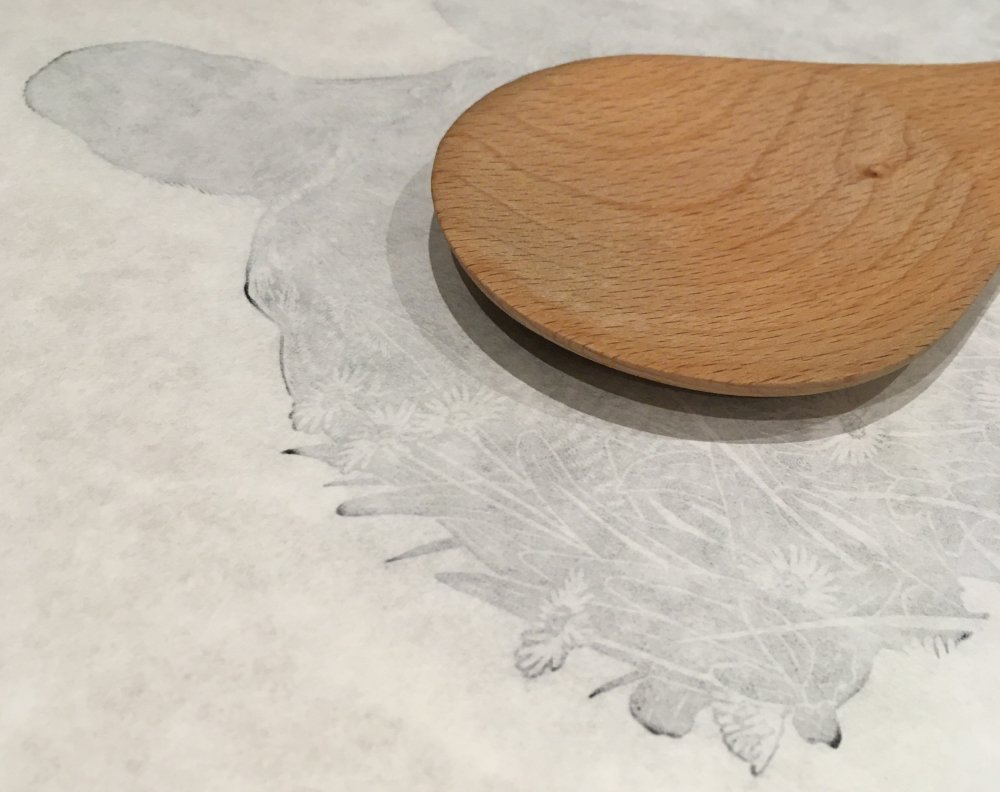‘The Brace’ - Limited Edition Relief Print
Inspiration
A highlight of any trip to a place where there is water when you are young is feeding the Ducks… and so it was for me. My favourite park had a large lake and there you could feed the Ducks, Geese, Swans and Gulls whatever delicacy you brought them.
They loved sweetcorn, peas, oats, seeds or rice. These could be thrown into the water for them to squabble over or, if you were very brave, offered on a flat, out-held hand. There is nothing quite like the feel of a wide, flat duck’s beak in your hand as it gobbles up peas!
On one such outing, I learned that ducks use the serrated edges of the beaks—called “pecten”—not only like a comb as they preen oil into their feathers to keep them buoyant, but also to filter food from the liquid that is squirted out while they are feeding underwater. They have further finer filters inside the beak, but you can only see those if one opens its beak to “Quack” near enough for you to see it!
A pair of Ducks is monogamous, though usually only for a year. The duck does all of the brooding and rearing while the drake moults his handsome iridescent and flight feathers and looks more like a duck until autumn when he moults back out of his “eclipse plumage” and into his breeding finery once again.
Design
This print evolved quite a bit as I worked on it. As always it started with a drawing. This brace of Mallards—the drake in his breeding plumage, his head glossy green, his chest brown with hints of purple—resting in the early daisies have not yet nested.
While I was at University, I studied Old and Middle English and was delighted to learn that name of one of my favourite little flowers, the much petal-plucked and chained “daisy”, comes from the Anglo-Saxon “dæges eage” which means “day’s eye” because the flowers close at night and open again as the sun rises. A fact that tickles me to this day, so I wanted there to be daisies in the design.
Once I transferred the drawing to the lino, I had to decide how the daisies and grasses in the foreground would interact. All of the daisy petals would be white (of course!) as they are in real life and their stems would be too, while some of the grass would be white and some outlined. Originally the plantain leaf veins were thin and almost dashed like a “lost and found” line in a traditional oil painting, as you can see in the block ready for the first proof below.
I remove less rather than more as I cut a design as you can’t put back white space that you’ve carved away. I love this aspect of cutting a design; it adds a frisson on excitement as all could be altered with every pass of the gouge, but it can be nerve wracking, too, when you’re near the end of a design!
Once I’ve made a test print, I’ll put the print up in the studio and look at it really closely. Sometimes I’ll annotate it with what needs to be changed before taking my gouges to the plate once more to make sure everything looks just right before I print the final edition.
Here you can see where I’ve removed more lino after taking a proof. Now the block is ready for the final edition to be printed.
If you need this lovely pair of loved-up ducks in your life head over to their gallery page as there are only 25 hand-pulled prints in this edition!




